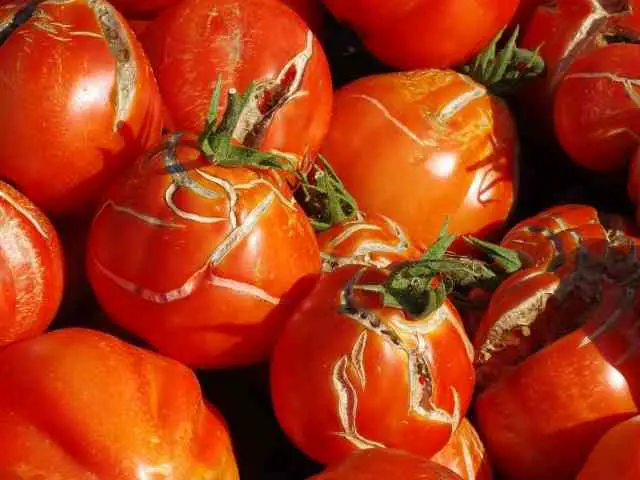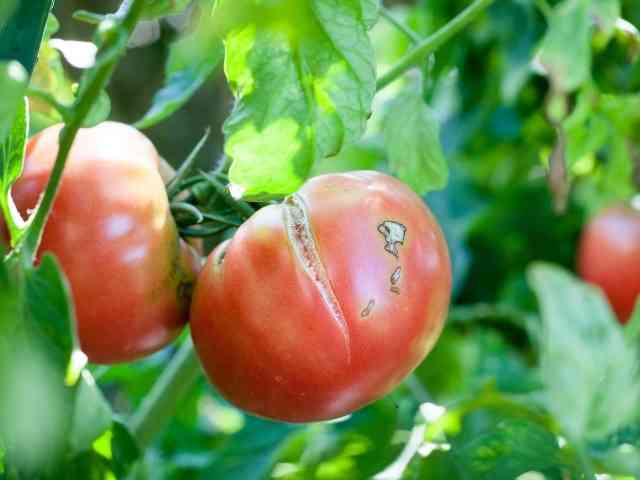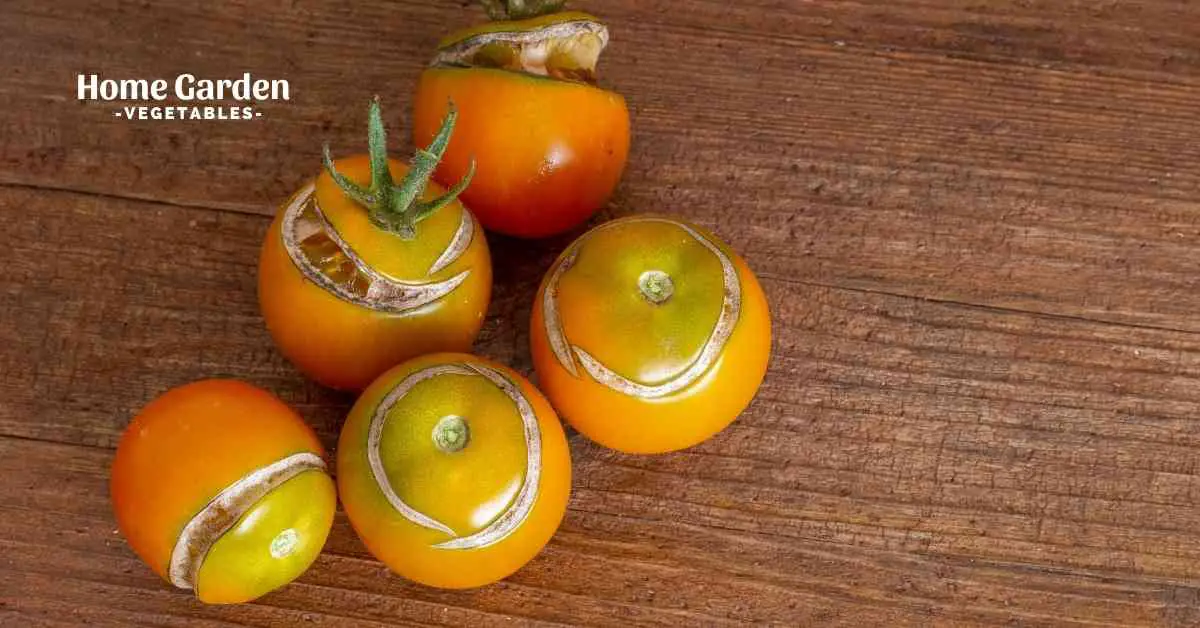One of the most prevalent issues with tomatoes is cracking and splitting. The good news is that bugs or illnesses aren’t to blame for those ugly fissures.
Tomatoes split apart when the development of the fruit outpaces that of the skin, which happens most often after heavy rain. The bad news is that tomatoes that have been split can transmit germs into the fruit, causing it to rot.
Reader Poll: What online courses would interest you?
How Do You Know If Your Tomatoes are Splitting?
Vertical splits, in which radial splitting spreads from the top of the fruit to the bottom, and concentric cracking, which commonly develops on the top of the fruit, forming fractures around the stem on big, heritage beefsteak kinds, are the two types of tomato cracking.
Tomato Splitting
While tomatoes can split at any stage of development—green or ripe—it seems more aggravating when you’re about to pick that wonderful fruit for a great supper. What is the best way to keep tomatoes from splitting? And, most importantly, is the fruit still edible?
When tomatoes are given an irregular amount of water, they split. Though ripe tomatoes are more susceptible to shattering, green tomatoes can still be affected.
Subscribe to our newsletter!

Why Do Tomatoes Split?
- As far as cracking of tomatoes, heavy rain is the most common cause, specifically for tomatoes that thrive in dry environments. Tomatoes, on the other hand, can withstand heavy rains but can split when the weather changes abruptly. Also creates cracks is neglecting to water tomatoes and then quickly flooding them.
This occurs when the center of the fruit grows considerably quicker than the skin on the exterior due to excess water. The skin breaks vertically or horizontally as it erupts.
- Rapid fluctuations in soil moisture levels lead fruits to expand faster than the tomato skin can result in cracking and splitting. There are two possible patterns for this injury. Radial cracking, or vertical cracks along the sides of fruits, is the most dangerous.
This dividing pattern is most frequent in hot, humid conditions. Concentric cracking is a type of cracking that develops in a circular fashion at the top of tomatoes, circling the stem end. Green tomatoes with any sort of cracking are more prone to perish before completely ripening if left on the vine.
How to Prevent Tomato Splitting?
You cannot always avoid tomato splitting; a rainstorm that drops multiple inches of rain over your garden in a matter of hours, no matter what you do, may result in the splitting of tomatoes. However, you may reduce the likelihood of your tomatoes splitting in the following ways:
- Mulch
Apply a 2 to 3 inches layer of organic mulch to your plants, such as pine needles, straw, or crushed bark. Mulch helps to keep soil moisture levels constant, which means less splitting.
- Plant Resistant Varieties
Grow varieties that are resistant to pests and diseases. Look for types that don’t split on the plant’s label or in a seed catalog. Many hybrid types are disease-resistant and high-yielding, as well as being less prone to splitting.
- Early Tomato Picking
Your tomatoes are nearly ripe, and you’re bracing yourself for a heavy downpour. It’s the ideal time to harvest your tomatoes now before they’re suffocated by excess moisture. Tomatoes that have started to turn color may ripen whether on or off the vine, so pick them before a storm and put them on a windowsill to finish ripening.
- Water Regularly
Water your tomato plants every two to three days during the summer, since they require roughly an inch of water every week. By putting your index finger an inch into the dirt at the base of the plant, you can see if it needs water. There’s no need to water it if it’s damp. It’s time to give the baby a drink if it’s dry!
To prevent the spread of soil-borne diseases like blight and septoria leaf spot, irrigate the plant from the base and avoid splashing dirt on the leaves.
- Water Deeply
Drip irrigation is much better. Regular, thorough watering will reduce the impact of a sudden shower by preventing your plants from being shocked by too much water after a period of drought, which can cause fruit to split.
- Right Location
Since heavy rainwater will drain away faster in the loose soil, growing tomatoes on containers or raised beds with drainage holes will alleviate the problem.
- Use of Fertilizer
During the growth season, fertilize tomatoes every other week with organic Tomato-tone. Fertilizer helps plants that produce quite as many tomatoes as possible by keeping the soil healthy.

Can You Eat Split Tomatoes
If the split is minor and superficial, impacting only the fruit’s surface, it’s probably fine to consume. How tiny is too small? It’s never a bad idea to be extra cautious. After cleaning the fruit, cut around the crack and utilize what’s left, throwing the damaged piece.
A wider incision in the side of one of those delicious orbs invites bacteria and fungus to take up residence, resulting in decay. If a crack is broad or deep and cuts into the flesh, it’s best to put the fruit into the compost pile or the trash.
When it comes to germs and fungus, it’s always better to be cautious than sorry.
While the fruit is still on the plant, it can mend itself by filling in the wound with hard grayish-white flesh. After harvest, this solid part may be trimmed away. The rest of the tomato can be kept and utilized if the interior is brilliant and red when sliced.
Time is also a crucial factor. If you observe a split, attempt to select the affected fruit as quickly as possible. Allowing it to sit in the sun for longer raises the danger of microbial or fungal development and illness.
Conclusion
As concentric cracks are generally minor and self-heal, you may consume this sort of cracked tomato. Radial fractures are typically deeper and have the potential to break the fruit in half. It’s alright to consume tomatoes that have split open if the break seems to be little, especially if the region surrounding the gap is trimmed away.

